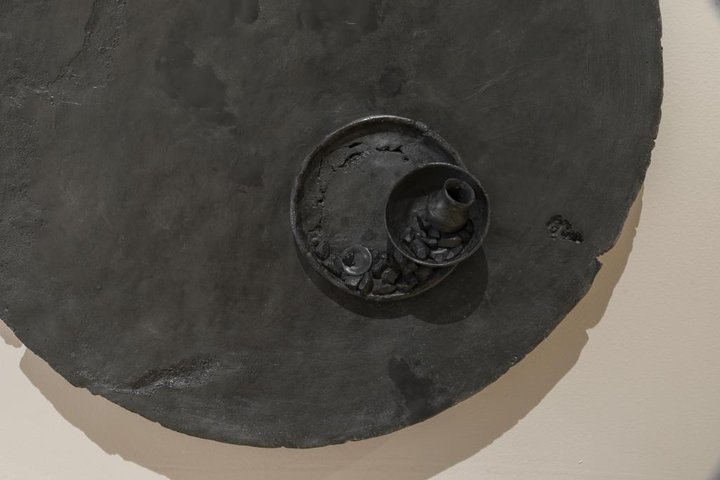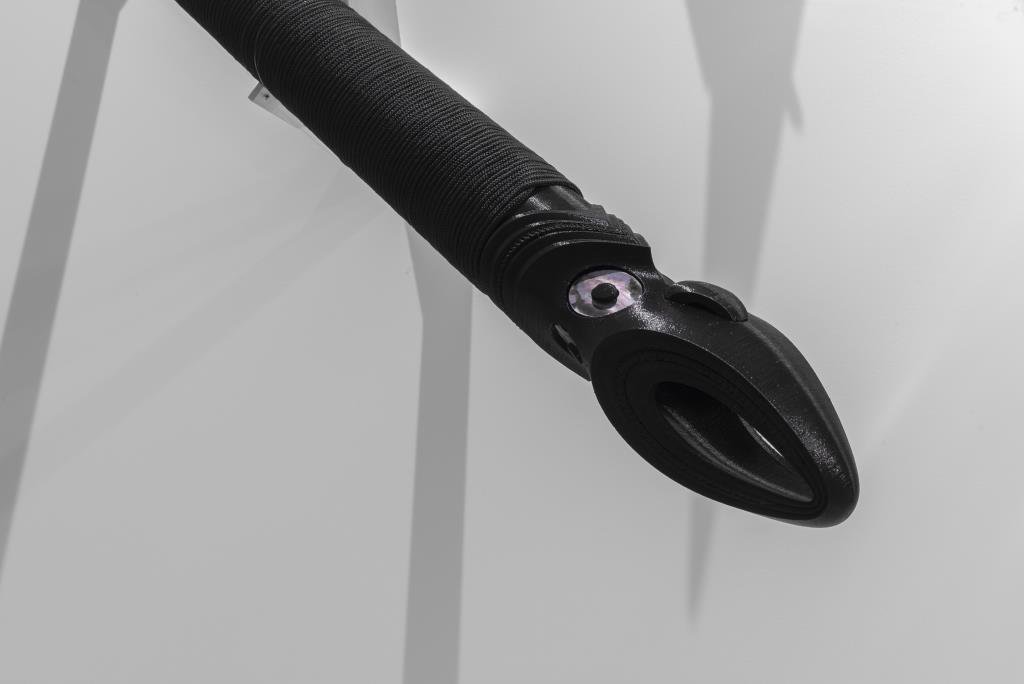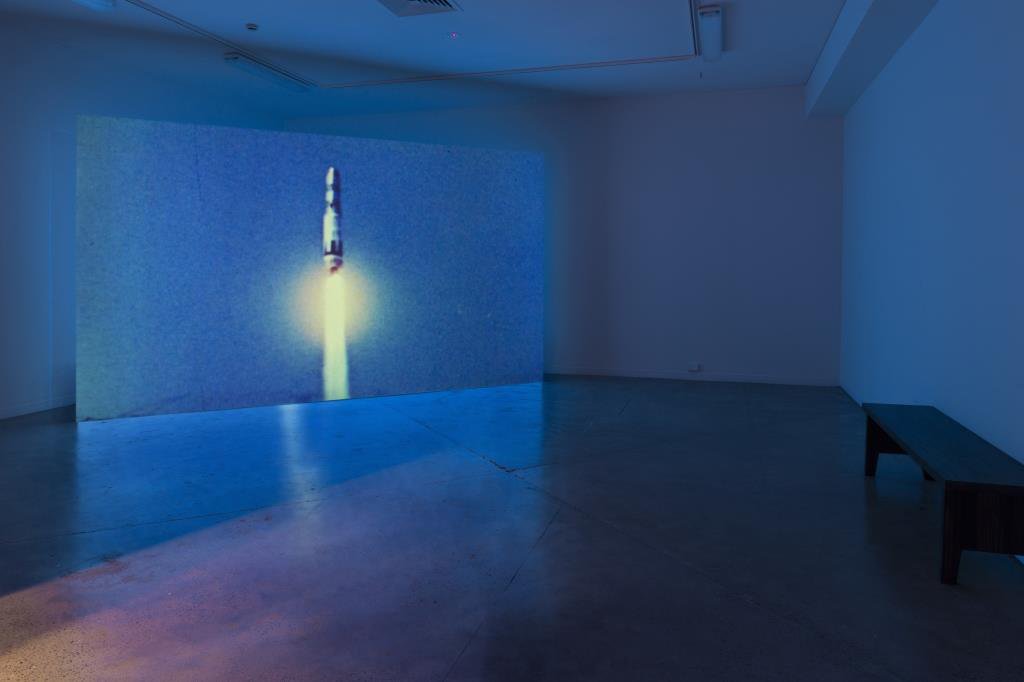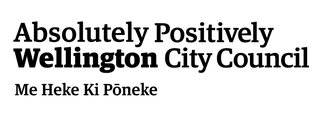9 July 2020
Three picks from Director of The Dowse Art Museum, Karl Chitham
 Photo: Shaun Matthews
Photo: Shaun Matthews
Karl Chitham is the Director of The Dowse Art Museum in Lower Hutt. Here he selects three of his favourite works currently on show at The Dowse, all connected by their relationship to uncovering the past to look into the future.

Kereama Taepa, He Pukaea, 2019. Ā Mua at The Dowse (install view). Photo: Shaun Matthews
Kereama Taepa
He Pukaea, 2019
The Dowse Art Museum is known nationally for its collection of New Zealand studio craft, which was championed by previous Director James Mack. A larger than life character, Mack spent much of his museum career ensuring that craft held the same status as art within our public institutions and was instrumental in highlighting our makers through international exhibitions.
Following in this tradition we have curated the exhibition Ā Mua: New Lineages of Making which features 23 projects sourced from across the country and covering an incredible diversity of cultural knowledge, historical making traditions and contemporary responses. Co-curated with Kolokesa U Māhina Tuai, this exhibition interrogates the notion of craft and its place in today’s society as well as signaling what the future of making might look like in the years to come.
Included in the exhibition is the work, concisely titled He Pukaea, by Papamoa based artist Kereama Taepa (Te Arawa, Te Āti Awa). It references toi Māori (Māori art) such as taonga pūoro (musical instruments) and whakairo rākau (wood carving) and reflects the notion that among the many making traditions employed by Māori over the centuries, that innovation was not only a tool used to advance artforms, but was an artform in itself. This work for me is one of many symbols within the exhibition of how exciting and expansive the future of craft is proving to be and the rich, nuanced and sometimes complicated histories we have to draw on here in Aotearoa.

Fiona Amundsen and Tim Corballis, Human Hand (install view), 2020, The Dowse. Photo: Shaun Matthews.
Fiona Amundsen and Tim Corballis
Command Performance, 2020 (from Human Hand)
The exhibition Human Hand by Fiona Amundsen and Tim Corballis is a timely and fascinating exploration of three sites in Arizona, USA, that all explore how “people have coped differently with the consequences of military capitalism—hoping either to build alternatives, to escape, or to live right at the heart of it.”
The exhibition features three video projections paired with soundtracks from interviews with women connected to each site. During the installation of the exhibitions I often found myself working in one particular gallery as the soundtrack repeated over and over above me. The work titled Command Performance features an interview with Yvonne Morris, Director of the Titan Missile Museum and a former employee of the United States Airforce. Her job at the height of the Cold War, if it came to it, was to push the button that would launch the intercontinental ballistic missiles that would effectively be the beginning and the end of World War 3.
This work brought back many memories from my childhood, growing up in a world that was under the constant threat of nuclear war. Hearing Morris talk about her conversations with people when they found out what her job had been emphasised the uncertainty and fear of that time, but also how in our current circumstances we could have a greater impact and agency over what the future looks like.

Bekah Carran, And we look and comb our hair (detail), 2020, The Dowse. Photo: Shaun Matthews.
Bekah Carran
And we look and comb our hair, 2020
Sometimes we get so busy that we stop noticing the little things around; the way the light falls on the kitchen table, the sound of birds busily moving about the trees outside or the strange assemblage of objects that collect in bowls around the house. In a post-lockdown world these moments, which may have been obvious while restricted to our homes are quickly loosing significance as we return to the hectic pace of a semi-normal life.
Dunedin based Bekah Carran’s (Te Ati Awa, Taranaki) installation And we look and comb our hair is like a display of historical items excavated from some unknown archaeological dig. The combinations of everyday forms such as a hair comb, brick, blade of grass or broken bowl, cast or formed from concrete or brass, make me think of how our future selves might view our conspicuous consumption in the decades and centuries to come.
Although Carran has intentionally underlined the faux artefact references in her installation, this is not a one note body of work. There are many layers to the work which suggest other readings that are heightened by the beautiful and slightly austere exhibition display that reminded me of 1970s books on ikebana, the set of a high concept horror film or more contemporary presentations of modernist sculpture. This exhibition is not a one trick pony but keeps giving the more you spend time with it.
Plan your visit to The Dowse here.


